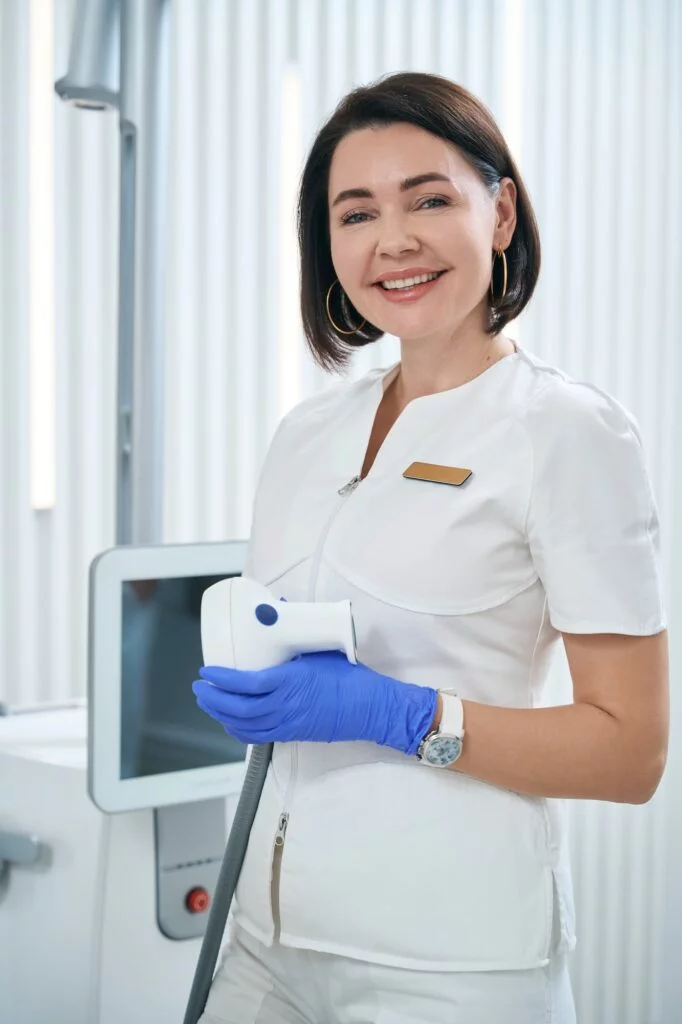If you experience acid reflux or other esophageal issues, such as heartburn, you should consult with a gastroenterologist to determine what’s wrong. In most cases, gastroenterologists can review symptoms and the patient’s medical history to figure out a diagnosis. However, there are situations when this information is not enough to find the problem. So, if this is the case, how will your doctor figure out what’s going on with your esophagus? Most likely, an esophageal manometry test is the appropriate diagnostic tool to employ.
Read on to learn how a manometry test works and its uses.
What Is an Esophageal Manometry Test?
Your esophagus is a hollow, muscular tube through which food and liquid pass from your throat to your stomach. It is an important component of your digestive system.
An esophageal manometry test assesses whether your esophagus functions correctly, including the lower esophageal sphincter. The lower esophageal sphincter (LES) permits food to pass from the esophagus into the stomach and prevents gastric fluid from coming back into the esophagus. Acid reflux is typically caused by LES dysfunction, in which the esophagus becomes inflamed by stomach acid or bile that comes up.
The common symptoms that may necessitate manometry testing include:
- Heartburn
- Chest discomfort after a meal
- Dysphagia or difficulty swallowing
- Odynophagia or painful swallowing
- Regurgitation or food coming back up after swallowing
How Do Gastrointestinal Doctors Perform Esophageal Manometry Tests?
Esophageal manometry is a procedure that is generally performed in the office by a gastroenterologist. A manometry unit consists of a computerized module, a digital display screen, and a flexible nasal catheter. The catheter is a thin, flexible tube with eight sensors to detect minute esophageal pressure changes.
A manometry test usually takes between 20 minutes to an hour to complete, assuming no delays. Esophageal manometry is generally done in the morning to ensure that your stomach is empty.
Here’s what happens during a manometry test:
- Your gastrointestinal doctor will apply a topical anesthetic or numbing medicine inside your nose before inserting the catheter. The inserted tube travels down your nose, through your esophagus, and into your stomach. You will be seated as your doctor does this.
- Once the catheter is inserted, your doctor will ask you to lie on your side. The end of the tube exiting your nose links to a machine. This machine records the pressure applied to the tube. Sensors located throughout the tubing measure the strength of the lower esophageal sphincter and esophageal muscles.
- You will then swallow a small amount of water during the test to assess how well the sphincter and muscles are working. The sensors also measure the strength and coordination of the esophageal contractions (spasms) as you swallow.
- Your doctor will then withdraw the catheter to compare the pressure at your upper esophageal sphincter (UES) to the pressure in your esophagus and throat.
- Your doctor will assess the results, record findings, and share the resulting report with you and your referring physician a few days after the test.
24-hour pH-Impedance Testing
You may do an additional test along with the manometry test. One method your GI doctor can use to assess acid and nonacid reflux from your stomach into your esophagus is 24-hour pH-impedance testing.
Here’s how the test works:
- After the manometry test, your doctor will connect the catheter to a recording device that looks like a pager. This device can be worn on your belt or attached to your clothing.
- The tube remains in place for 24 hours while you eat, drink, sleep, and do your normal activities. You will need to keep a diary of your mealtimes and any symptoms you may be experiencing, such as chest pain or heartburn.
- The following day, you will return to the lab to have the catheter removed.
- Your gastroenterologist will then interpret the data collected and relay the results to you.
The tube used in the manometry test will not interfere with your breathing. You may experience discomfort while your healthcare provider inserts the catheter, but this feeling will not last and should not be painful.
Consult with your doctor to know if you should take a manometry test. Your doctor will discuss the process in detail with you and how you should prepare for it beforehand.
Gastroenterology Services in California
A manometry test is a diagnostic tool that helps your doctor determine what’s causing your digestive problems. If you’re experiencing acidity problems or swallowing issues, our gastroenterologists at Genensis Healthcare Partners can help. Our doctors have the expertise to diagnose and treat your esophageal issues. We are equipped to perform a variety of procedures, as needed, including manometry testing.
If you have any inquiries, call our location nearest you or use our convenient online form to schedule an appointment today. You may also reach the physician of your choice by searching our inSite provider webpage.
Genensis Healthcare Partners has over 20 associated private clinics throughout California to accommodate your gastrointestinal needs. We look forward to providing you with the care you need!



